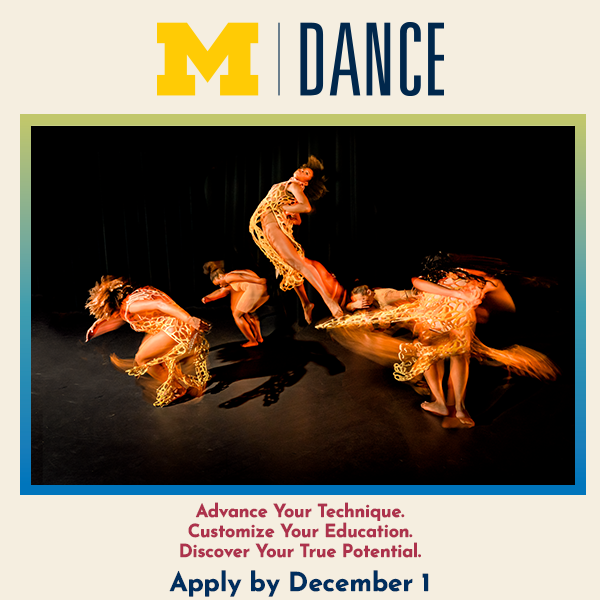I tend to latch on to something visible and repeatable from an experience, in order to fool myself into thinking that I got it. Yesterday I sat down for a few minutes to meditate using my ears and the sounds coming and going as a way in—and out—thinking, being, finding the present moment. This was a revelation and a gift I took from the residency—thank you! I also replayed the extreme walk meditation the other day in Alexander class. These things I hope to keep in my repertoire of pleasurable and informative practices. I find them simple, profound and available. Many other elements in the residency are much more elusive to being captured in a specific moment or form. They are equally rich, possibly richer.
In terms of specific feedback, I have to say that I was extremely impressed with the level of organization and preparedness you—Hope and Michelle—brought to the residency with us. Information was being passed to us with thoughtfulness of purpose and direction. I liked the way the first week broadened the field with different perspectives on sound, listening, movement and art. I liked that you included a policy person along with seasoned artists working on the field of listening. And that we had the opportunity to absorbed some of Pauline’s and Barbara’s work. That was a great treat, besides being integral to the proposal of the residency.
I think one the most laudable things about the residency was the openness you both brought in terms of our participation. It filled the space with honesty and a real sense of exploration, that you were open to the unknown and willing to share that with all of us, inviting us into a process that was not predetermined in almost any way. I appreciated that a lot and think of it as a great model.
There was a lot to take in and a lot to tackle, but it is to your credit—you brought up questions, materials to work on them and a structure to work through it all, so we had a lot on our plates. As a result, there were points when I felt we could have used more time or made different decisions about the time we had, in order to dwell a little bit more on what you as artists have to offer. I enjoyed the explorations in the studio that Hope lead (as well as the very short, but enjoyable warm-ups!), and Michelle’s score we worked on our second-to-last day. There was so much more going on from the invited guests, our own collective development and the preparations for the sharing events with audience, that those moments felt a little bit cut short. Still, I think the balance was totally on the positive side.
Even though the first sound-walk was, for many of us, difficult, I loved it. I loved the difficulty of it, the rawness with which we tackled it, being almost not ready for it. I love it in comparison to the second one. The one made the other one in many ways. To have both is to know more about what we were doing, even if it’s still hard to know exactly what that might have been. Some things stand out about the sound-walk in Long Island City: I loved the duet score with the “audience.” (Thank you E.J.!) It was a great way of breaking the barrier between one group (residency participants) and the other (sound-walk participants). However many other factors played into the differences between the sound-walk attendance and participation in Grand Central and LIC, there’s no doubt that the score itself made the second one more successful in conveying and sharing our process. It was a great pleasure to have visitors join us in moving throughout the sound-walk, and the duets made that even more palpable. It brought up relating to each other while still actively and attentively listening and perceiving in our “artists’ heads”. I found that moment very pregnant with possibilities and information about performing, being, presence and choice.
I think one assumption about audience participation is that is a step down from the pure, performative qualities of the artist’s focus. Whether that’s only some misconception of mine, I don’t know, but in the sound-walk, I had the opportunity to examine my feelings about this. I was aware of opening up to my partner’s company—his responses, initiatives, observations, proposals, etc.—while keeping my presence of mind with my own way of navigating the moment, including listening and following my physical movement. It became lighter somehow, less intense, more ample in focus, more playful and, in a way, more real, because by being an openly shared experience, it became part of normal living and everyday moment, even though we would never find ourselves moving and looking and feeling the way we were.
I learned too about the value of familiarity. Being somewhere more than once, already changes your relationship to that place, as thinking something for a second time, is not like the first time the thought comes up. I think in LIC we made good use of that visiting and revisiting the site with different intentions.
In my personal journey within the residency, I went from thinking about listening as that which is the core of improvising, to understanding it as something much more sophisticated. I think I really listened like I had never done before. I enjoyed thinking about the relationship of listening to seeing, and between listening to the outside of my body and listening to its inside. I also enjoyed thinking about the body as a resonance box and re-thinking sound as a phenomenon of movement (waves, particles, relationships). I take with me Barbara’s “slow enough that I can be genuine.”





